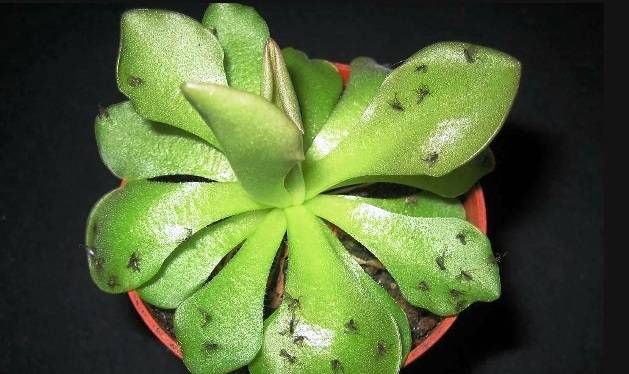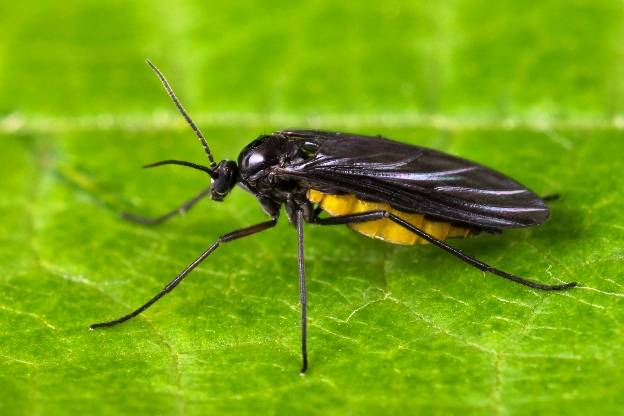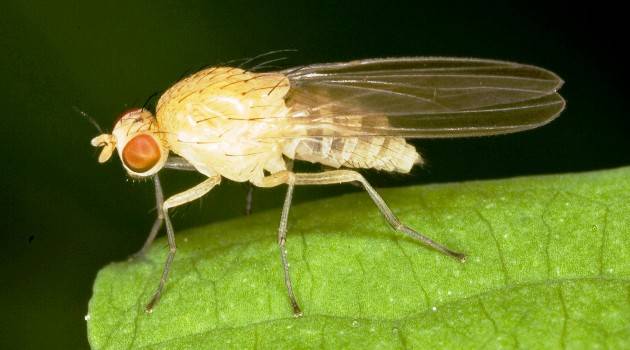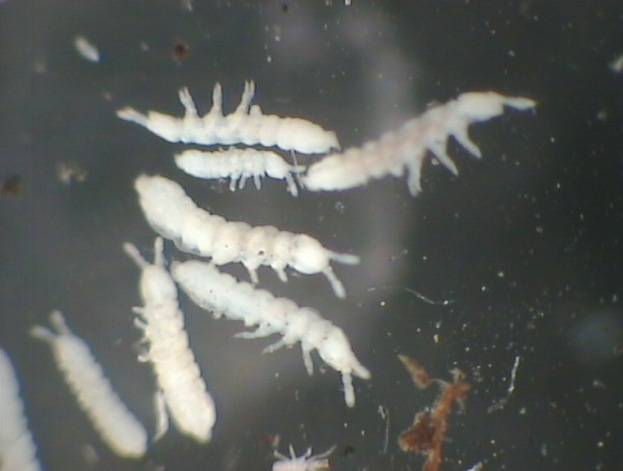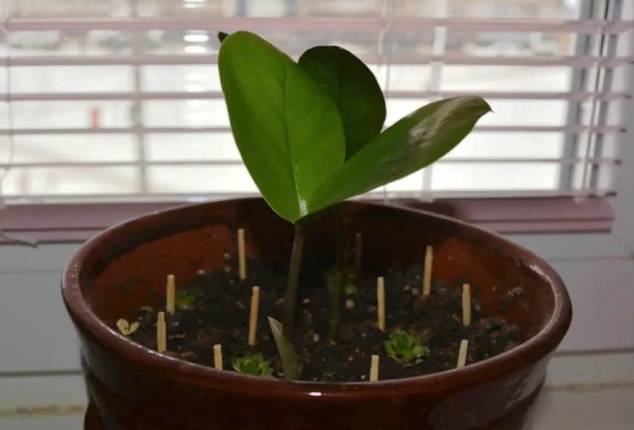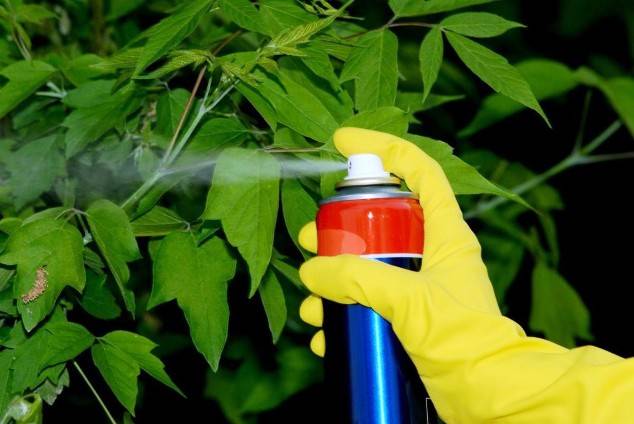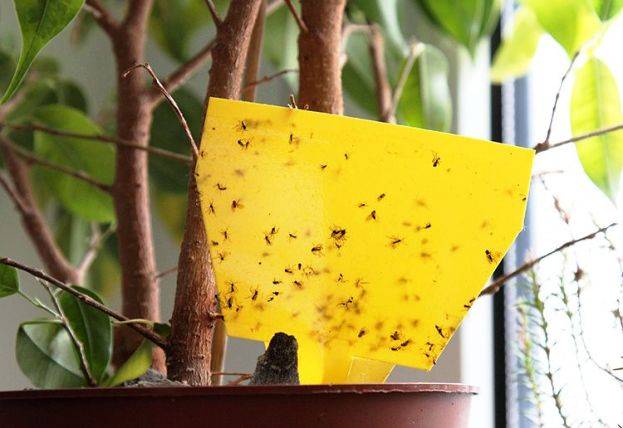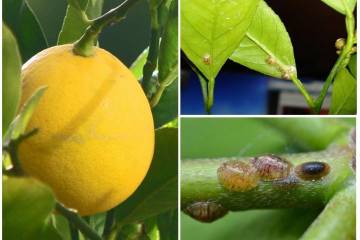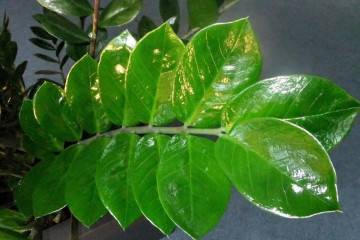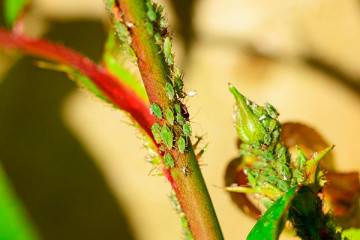Midges in indoor colors - how to get rid of at home
Content:
Growing indoor flowers, people are faced with various problems, including the appearance of midges. Even inexperienced gardeners notice them. Midges fly around flowers, jump on the ground, settle on the walls of the pot, and occupy the leaves. Among them there are dangerous individuals that harm indoor plants. You need to fight them. Anyone who has flowers must learn to get rid of insects.
Midges in indoor colors - how to get rid of at home
The insects attacking house flowers come in different types. The sooner the pest is identified, the more successful the fight against it will be.
Fortunately, there are not many species of gnats that spoil houseplants. So it will be easy to learn and remember them.
Whiteflies
In the house, they often encounter tobacco, greenhouse and citrus white and yellowish butterflies 2-3 mm long. Their larvae gnaw the reverse side of the leaves, thereby causing great harm to the flower. Pests absorb juices from leaves and stems. Waste products are left there in the form of sticky sugar spots and small eggs.
Insects reproduce quickly, and they can completely destroy the flower in a short time. The most dangerous are the winter and spring months. If you ignore the appearance of midges, a sooty mushroom develops on the foliage, inseparable from honeydew. Adults are harmless. The main victims of the whitefly include roses, fuchsias, and balsams.
Sciarids
This black fly is sometimes called the mushroom mosquito. Small midges, 0.5-3 mm long.
Adults are harmless to humans and plants. The larvae move to the ground. Absorbs organic residues, including flower roots. They take root in the root system of violets, ficus, aloe, azaleas. They love waterlogged soil. Developing rapidly.
Fruit flies
These fruit flies are only 2-3 mm in size. They resemble flies in appearance. Do not pose a danger to indoor plantings. It is upsetting that fruit flies, rapidly multiplying, flutter in clouds around the house. And this is not always pleasant to the inhabitants. Individuals feed on rotting vegetables and fruits. They live in violets, orchids, calla lilies, cyperuses. Drosophila will disappear if power is lost.
Signs of damage to flowers by soil midges
Soil gnats, also known as springtails, often live on flowers. The reason for the appearance is the oversaturation of the soil with liquid. Pests live in the upper soil layer and inside the container, where they settle their larvae. The length of an adult in domestic floriculture is 4 mm, the color is white or yellowish-brown. You need to be afraid for geranium, violet, orchid, cactus, carnation.
When jumping insects appear, as well as holes in foliage and young stems, white bloom, measures should be taken immediately. Reduce watering, check drainage, soil density. You can replace the pot with a larger container with an updated soil composition.
Why insects start
Reasons for the formation of small pests:
- Contaminated soil. Often, soil purchased from a flower shop can be infected with larvae. Therefore, before use, the soil is disinfected using a solution of potassium permanganate or using an increase in temperature.
- New indoor flowers. When buying a new plant, the flower and the ground are examined in the store. At home, a new plant is placed at a distance from the rest. Observe for 2-3 weeks. With good performance, they are transferred to a permanent place.
- Waterlogging of the soil. To exclude such a phenomenon, you should inspect the pallet after watering. Filling it with water indicates the need to reduce the volume of liquid during irrigation.
- Organic fertilizers. A serious approach to the selection of organic feedings is required, due to the possible content of midge larvae and eggs in them.
- Overcrowding of plants. If the flowers are close to each other and there is insufficient air circulation, this is a direct path to pest infestations.
- Flowers are on open balconies, balconies, windows. Midges fly into the openings. Installing mosquito nets will help protect the plant.
How to remove soil flies in flower pots in an apartment, house
There are many folk remedies to get rid of midges on flowers. They are used at the first appearance of pests. If there are a lot of midges in the house, they use chemistry that is safe for the bushes.
Folk remedies for removing midges
After detecting midges, the first thing to do is dry the soil in a pot. In dry soil, eggs and larvae die. But if the midges still continue their activities, they resort to folk methods.
Matches, potassium permanganate, garlic from midges in indoor flowers
Application methods:
- They take matches and stick their heads into the ground as far from the bush as possible, water it several times. The sulfur is washed off, and the larvae disappear with it. If unsuccessful, the procedure is repeated again.
- For processing, a pale pink solution of potassium permanganate is used. It will not only get rid of the larvae, but also heal the roots of the flower plant.
- A few cloves of garlic are spread over the surface of the soil or a garlic infusion is made. Finely chop 3 cloves, pour in a liter of water and insist. The tincture is filtered and the flowers are watered. The strong smell kills the larvae. The procedure is carried out 3-4 times with a week break.
- Prepare tobacco infusion from 40 g of raw materials and a liter of boiling water. After cooling down, watering is carried out three times in 2-3 days.
- 50 ml of ammonia is combined with 4 liters of water. Thanks to watering, the larvae will disappear, and at the same time the flower will be enriched with nitrogen. Repeat the procedure once a week until the insects are completely eliminated.
- To cure a flower from a whitefly, household or tar soap is grinded on a grater, poured with water in a ratio of 1: 6. The sprouts and leaves of the plant are rubbed daily until the midges disappear.
- Dilute 1 tsp. vinegar in 2 liters of water. The composition is sprayed on leaves and stems. After such procedures, midges will disappear, the leaves will become bright, shiny and elastic.
White midges in indoor flowers: how to get rid of with ash and chalk
The use of wood ash has two benefits for indoor plants. On the one hand, ash is a good fertilizer.If you pour ash on the ground, the number of insects will decrease. After repeating the procedure, you can forget about the flies forever. However, when using ash, you need to know when to stop.
Cockroach chalk also acts as a remedy, which copes well with insects, including flies in flowers. Chalk lines are drawn on the walls of the pot on both sides. The process is repeated to obtain a lasting result.
Modern methods of struggle
Chemical compositions are an effective method of how to get rid of midges in the flowers of indoor plants, if folk remedies do not help.
Chemicals (insecticides)
A number of insecticides are available, but it is better to use safe formulations.
How to get midges out of indoor flowers with the modern Aktara remedy:
- Dilute the insecticide with water at the rate of 1.4 g per 10 liters of water.
- Moisten the soil under the bush and spray the flower with a spray bottle.
- The effect of the drug will begin 0.5 hours after treatment. The midges disappear completely in a day.
- Re-process after a week.
The drugs of the same action include "Agravertin", "Fitoverm", "Fufanon", "Inta-vir". After spraying with liquid insecticides, the bushes are not watered for five days.
Granular insecticides "Thunder-2", "Mukhoed", "Bazudin" are mixed with the surface layer of the soil. Although granular insecticides are slower to neutralize black flies than liquid insecticides, their effectiveness is not diminished.
Special means
In stores, he sells special products that are less toxic, but effective. These include the following attachments:
- The traps are sticky. Sticky tape for flies or a glue trap for insects is hung next to the infected bush. The device will be able to remove flying individuals. Traps are suitable for small midges.
- Aerosols. The spray can be used to get rid of adult flying pests. A very careful processing of not only the flower itself, but also window sills, shelves, racks where pots of flowers stand will help.
- Mosquito fumigators. The devices operate on electric current. The purpose of the action is to scare away midges from flowers.
Prevention of the appearance of flower midges
What to do for prevention:
- Inspect flowers regularly.
- Fight adults daily. It's easier than fleeing a midge colony.
- Loosen the soil, make good drainage, which will prevent the appearance of larvae.
- Limit watering. A highly moistened soil provokes the appearance of midges.
- Keep flower pots tidy. Remove fallen leaves, flower petals, seeds.
- Disinfect the soil.
- Place expanded clay, gravel or sand on the surface of the ground. This will prevent midges from getting into the ground and laying eggs.
- Refuse organic fertilizing.
Midges are dangerous for indoor flowers. And it is very important to detect them in time and try to remove them faster. And in order to avoid losses, it is necessary to carry out preventive measures, properly care for and protect flowers from pests. And then midges will not be able to appear on indoor plants.
